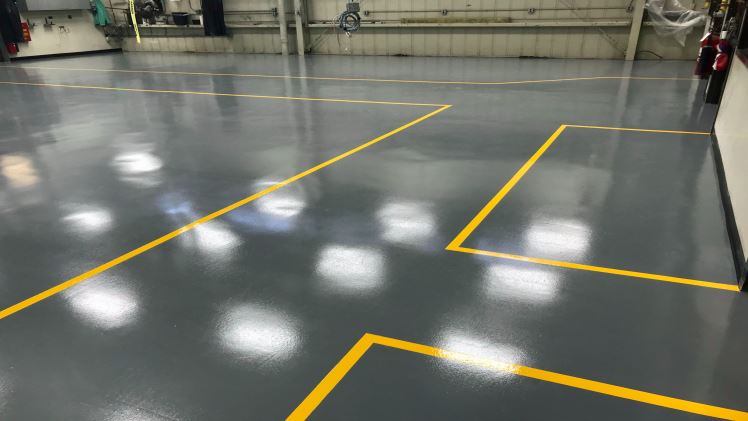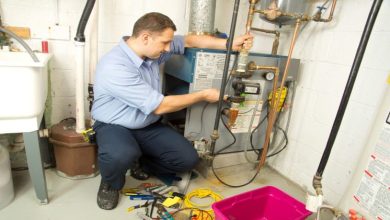Epoxy Coatings for Basement Garages: Special Considerations

With storage space, a safe place to park, and frequently direct access to the interior, basement garages are useful additions to our houses. But there are special difficulties associated with these subterranean areas, especially with regard to flooring. Epoxy coatings are becoming more and more popular as a useful and fashionable option for garage floors in basements, but there are certain things to keep in mind. We’ll go over the advantages of epoxy coatings for basement garages in this in-depth guide, along with the particular things to think about when using them in this setting.
Epoxy Coatings’ Benefits for Basement Garages
Because of their many advantages, epoxy garage floor coatings Greenville have become a popular option for basement garage floors:
- Durability: Epoxy-coated floors are incredibly resilient and can tolerate the frequent heavy use, foot traffic, and vehicle traffic that garages are known for.
- Chemical Resistance: Epoxy coatings are extremely resistant to stains and damage from common garage-related substances like oil, gasoline, and chemicals.
- Simple Upkeep: To keep epoxy floors looking flawless, all that is needed to keep them clean are routine sweeping and the odd mopping.
- Aesthetic Appeal: Epoxy coatings provide a smooth, glossy surface that improves the garage’s overall design and makes it a more appealing area.
- Safety: A lot of epoxy coatings can be made to be slip-resistant, which guarantees people’s safety in potentially dangerous situations.
Even though epoxy coatings have these benefits, applying them in a basement garage calls for particular considerations due to the particular circumstances of this area.
Particular Takeaways Regarding Epoxy Coatings in Basement Garages
Planning an epoxy coating project for a garage in the basement requires taking into account the following particular factors:
- Humidity and Moisture: Water intrusion and excessive humidity are two problems that can arise in basement garages. Prior to using epoxy coatings, any existing moisture issues must be identified and resolved. To stop epoxy delamination and other moisture-related problems, proper setup and moisture mitigation techniques, such as vapor or moisture barriers, may be required.
- Concrete Surface Condition: A basement garage’s concrete substrate may be in a variety of states. Examining the surface for unevenness, pitting, and cracks is crucial. In order to guarantee that the epoxy coating adheres properly, repairs and surface preparation are essential. Epoxy coatings can also be used to cover up small flaws and level uneven surfaces.
- Ventilation and Air Quality: Compared to above-ground garages, basement garages may have less ventilation. Ensuring the safe dissipation of volatile organic compounds (VOCs) from epoxy coatings requires adequate ventilation. To preserve air quality, use low- or zero-VOC epoxy products and make sure there is enough ventilation both during and after the application.
- Temperature Considerations: For correct adhesion and curing, epoxy coatings need a range of temperatures. When applying, make sure the basement garage is within the suggested temperature range. Temperatures too high or too low may have an impact on the performance of epoxy.
- Slip-Resistance: In garage areas, safety is a major concern. To provide a safe walking surface, especially if the garage is used as a pedestrian pathway to the interior of the house, think about mixing slip-resistant additives into the epoxy coating.
- Customization and Design: Epoxy coatings can be tailored to your tastes even though aesthetics might not be the main consideration in a basement garage. Select hues, patterns, or ornamental accents that improve the room’s appearance and go well with your home’s overall style.
- Floor Drainage: To control water and spills, some basement garages have floor drains. Make sure that the location and operation of these drains are taken into consideration when installing the epoxy coating to avoid any blockage or interference.
- Furniture and Vehicle Location: Take into account where large furniture, cars, and equipment should be kept in the garage. A suitable layer of protection, like floor mats or furniture pads, can aid in avoiding scratches and other harm to the epoxy-coated surface.
The Application Process for Epoxy Coating
The following procedures are usually involved in applying epoxy coatings in a basement garage:
- Surface Preparation: This include making sure the substrate is free of contaminants, fixing any cracks or imperfections in the concrete surface, and giving it a thorough cleaning.
- Moisture Mitigation: To stop moisture infiltration if moisture is an issue, install vapor or moisture barriers as needed.
- Epoxy Primer Application: Use an epoxy primer to help the concrete and epoxy coating adhere to one another.
- Application of Epoxy Coating: Apply the epoxy coating in several layers, paying attention to the mixing ratios, application methods, and curing times recommended by the manufacturer.
- Customization (Optional): Apply an epoxy coating and, if preferred, add color, decorative accents, or slip-resistant additives.
- Curing: Make sure the humidity and temperature levels are appropriate and let the epoxy coating cure for the recommended amount of time.
- Sealing (Optional): For extra protection and gloss, think about using a clear polyurethane or epoxy topcoat.
In summary
For basement garages, epoxy coatings provide a number of benefits, such as longevity, chemical resistance, and visual appeal. However, because of elements like moisture, ventilation, and surface condition, applying epoxy coatings in a basement garage calls for particular considerations. In this particular setting, careful planning, customization, and close attention to detail are necessary for a successful epoxy coating project.
Through careful attention to these factors and collaboration with knowledgeable epoxy flooring specialists, you can turn your basement garage into a useful and aesthetically pleasing area that raises the overall appeal and usefulness of your house, find more here.





